Essential Garden Tools
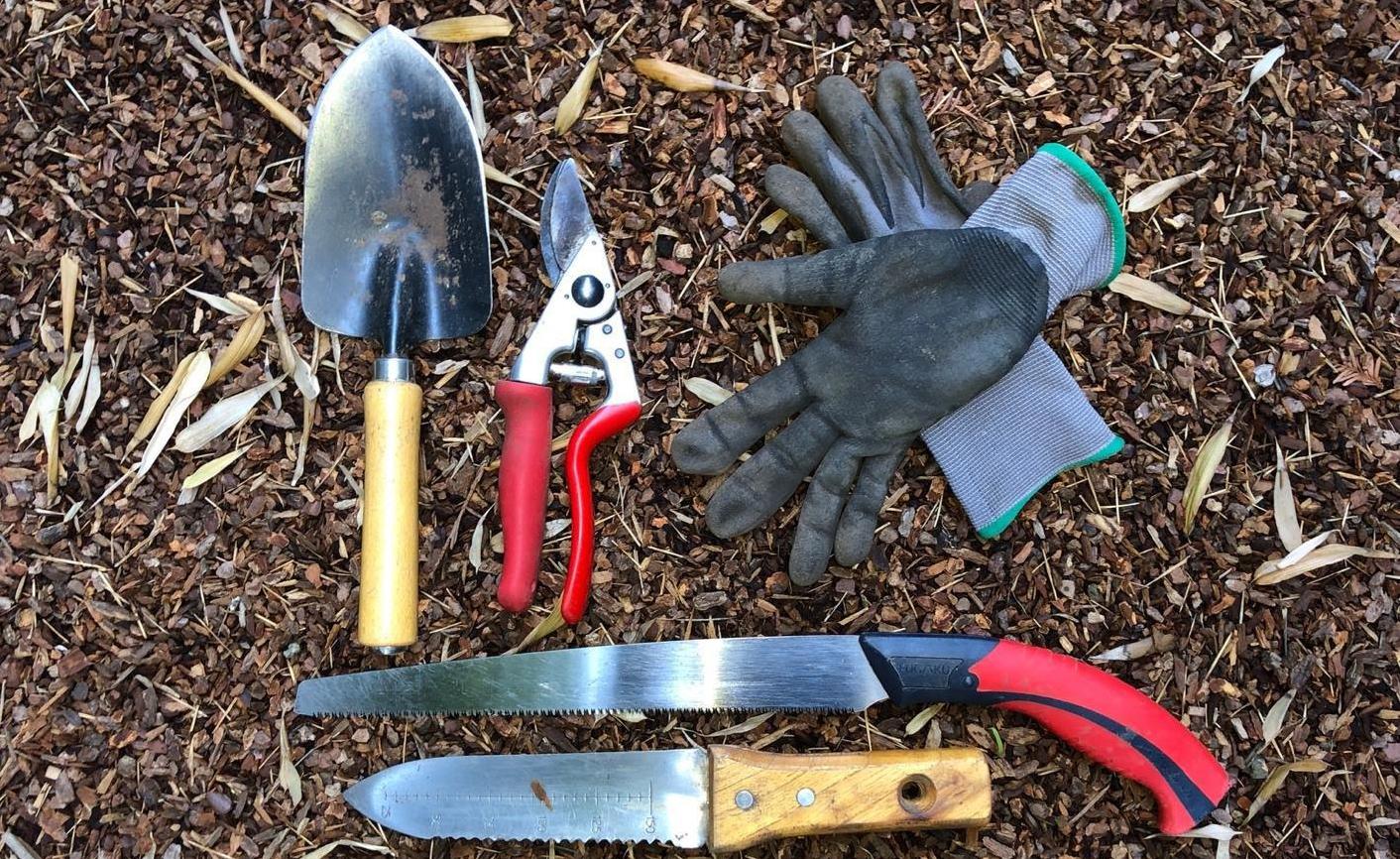
Every gardener needs these essential tools in their gardening arsenal!
> Hand Pruners > Fruit Saw
> Pruning Saw
> Gardening Knife
> Trowel > Shovel
> Spade > Hand Rake
> Rake > Gloves
> Irrigation
> Wheelbarrow, Cart, Bag/Tub
Basic tools: What to look for & their uses
HAND PRUNERS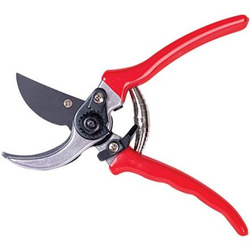
• Hardened steel blades
• Adjustable blade alignment
• Forged aluminum handle with rubberized cover
• Choose model that fits your hand size and if you are left or right-handed.
• Rotating handle is preferred for those with hand tenderness.
Uses:
• Thinning and pruning branches between three-quarters to one inch in diameter depending on the hardness of the wood

• Anvil pruners are only recommended for cutting dead branches because they tend to crush branch tissue making it harder for the branch to seal properly.
FRUIT SAW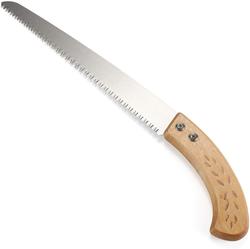
• 6 to 8 inch stainless steel or carbon blade
• Wooden handle
Uses:
• Useful for cuts larger than those that hand pruners can remove with moderate pressure from one hand.
PRUNING SAW
Look for:
• 9 to 13 inch curved or straight blade
• Blade can be fixed or folding
• Blade material is steel. Manufacturers offer different finishing methods for the steel.
• Number and shape of blade teeth determine ease and quality of cut.
• A full tang on the blade that integrates into the handle provides extra stability during use.
• Molded plastic handles offer long-term durability.
• Sheath (a.k.a. scabbard) should be used for fixed blades to provide protection.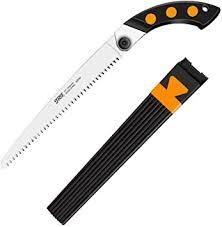
• Used for branches more than 1 and a half inches in diameter
• Cuts only on the pull, not on the push
GARDEN KNIFE (Hori Hori)
Look for:
• 6 and a half inch blade
• Vinyl plastic sheath with belt loop
• Wooden handle
• Measurements on the knife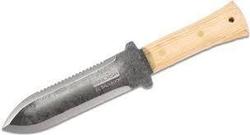
• Light digging
• Clearing away soil from the crown of a plant
• Cut through soil
• Uprooting weeds
• Light planting, dividing flowers and transferring small plants
TROWEL
Look for:
• Available in many lengths depending on task; a 14-inch trowel offers versatility.
• Single-piece steel construction or aluminum alloy
• Can be used in place of a soil knife
• Vinyl, easy to grip handle with hanging loop
• Powder-coated finish
Uses:
• Potting, planting and light digging
• Weeding
• Can be used in place of a garden knife if kept sharp.
SHOVEL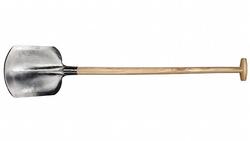
• Round pointed for normal yard and garden digging
• Wide scoop works best to move large amounts of lightweight material.
• Forged blade with an I-beam construction for sturdiness
• 44 to 48 inch handle or best fit for your height and reach; aim for a handle length that falls between your elbows and chest.
• A fiberglass handle is stronger than a wood handle.
Uses:
• Digging and lifting loose soil
• Moving large boulders
• Removing stumps
• Digging deep trenches
SPADE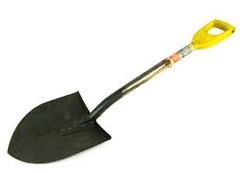
• 14-gauge hardened steel blade
• 18-gauge steel shaft
• 45+ inch handle or best fit for your height and reach; aim for a handle length that falls between your elbows and chest.
• Short-handled shovels and spades between 18 to 24 inches are a good choice when working in a confined area.
Uses:
• Cutting and digging heavy soil
• Incorporating organic matter
• Digging straight-sided flat-bottomed trenches
• Removing a layer of sod
• Harvest crops like potatoes
• Edging
HAND RAKE
Look for:
• Flexible, fan-shaped tines to prevent damaging vulnerable plants
• Molded comfort grip
Uses:
• Compact size for cleaning up spaces like tight flower beds, garden rows or under dense bushes
RAKE
Look for:
• Steel tines, 24 provide good performance
• Strong head to prevent tines from loosening
• Cushion grip to prevent hands from cramping
• 50+ inch handle or best fit for your height and reach; aim for a handle length that falls between your elbows and chest.
• Fiberglass handle is stronger than a wood handle.
Uses:
• Clean up leaves
• Remove debris
GLOVES
Look for:
• Water resistant, breathable nylon material helps keep hands dry.
• Flexible to increase hand efficiency
• Nitrile palms give you extra durability and grip.
• Gauntlets (wrist protectors) are good for pruning plants with prickles and thorns.
Uses:
• Barrier from soil, splinters, pricks, cuts, abrasions, insect and spider bites, skin irritants like poison oak
• Keeps skin dry, prevents sunburn and fingernail damage and reduces blistering
IRRIGATION EQUIPMENT
Uses:
• Watering can for gently watering transplants
• Drip irrigation places water exactly where and when you want it
• Garden and soaker hoses are good for general watering
WHEELBARROW, GARDEN CART, BAG/TUB
Uses:
• Moves mulch, compost, soil, stones, debris, tools and harvested vegetables
